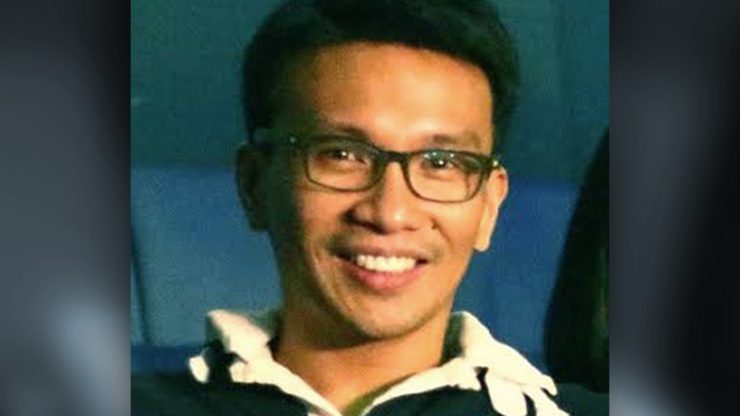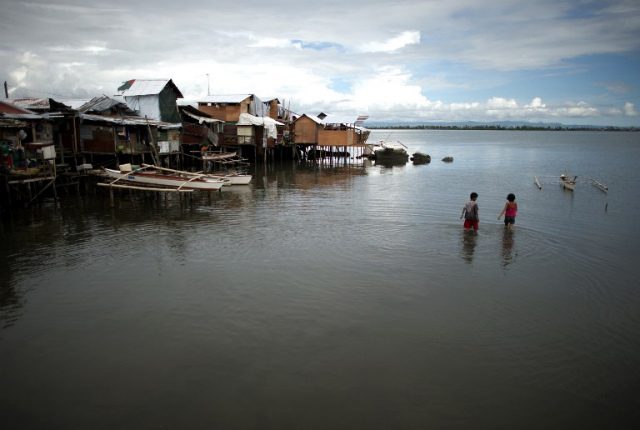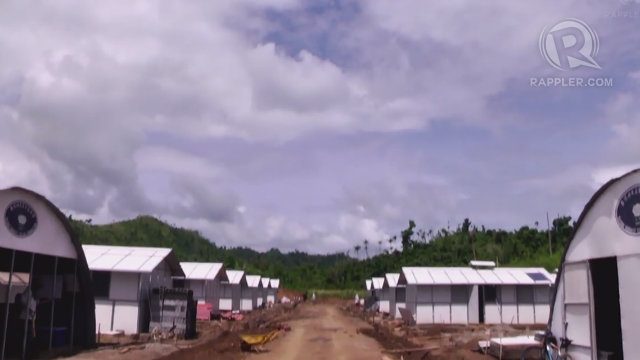SUMMARY
This is AI generated summarization, which may have errors. For context, always refer to the full article.

To conduct research on disaster as a sociologist is tricky. On one hand, the sociologist is expected to be as objective as possible, especially if the goal is to generate analyses that can inform policy and practice. On the other, it is equally difficult to be detached from one’s informants whose first-hand accounts remain as harrowing, even if one year on, as the events that transpired before their eyes.
In the interviews I did with my colleagues in Tacloban, practically all our informants cried when we asked about their Yolanda experience. It is hard not to. The wife of Jonathan, one of our informants in the bunkhouse community in Caibaan, lost twelve relatives but only two bodies have been found. That interview, which is perhaps the closest to a counseling session they could have, made me consider how faint the management of psychological trauma figures in technocratic discourses of post-Yolanda recovery.
I suppose this dilemma is not isolated to sociologists. Even more frequently, journalists in the field have to deal with cognitive and emotional dissonances that have implications on their own professional choices.
To me, to make a categorical choice between these two concerns is not entirely possible and may perhaps even be dangerous. Post-development thought by scholars like Arturo Escobar reminds us that what purports to be objective assessments of poverty – and in this case disaster – by technocrats have material consequences on local communities. The tricky part of my role as a ‘sociologist in the war zone,’ to borrow a phrase from Fr. Jack Carroll, involves a careful balancing act between the pursuit of a compelling analysis and the surfacing of personal accounts among segments of the population that fade out in the celebratory, if not middle class and Manila-based assertions that Tacloban is rising.
The overall issue that needs to be unpacked concerns uneven levels of recovery, if only to problematize the prevailing celebratory atmosphere.

While there are bunkhouse communities that look sturdy and well organized, there are too tent cities where tents have been browned not by the sun but by molds. While there are tent cities that look glistening and orderly from afar, there are too shelters being rebuilt in what the state has already rendered no-build zones. In Anibong, these communities share the same shoreline with awashed ships that kids have normalized as their playgrounds. Even our own informant, Maricel, has led us up one of these ships to take what should be Facebook-worthy profile photos.
For the record, many of these communities, simply because they are meant to be temporary, are subject to inevitable eviction. That this is the case stands in contrast to the fact that commercial establishments have been rebuilt with reinforced pillars in Tacloban. One of our informants, Jenny, who works for a local NGO, takes issue with (and even curses) what she considers biased recovery. When she accompanied us to one of the tent cities, I could feel her frustration that evacuees there have been left behind. The community organizer that she is, she asked one of the evacuees to accompany Rhod, our activist informant, when he visits the mayor’s office the next day to express their frustrations.
We all know that the recovery has been slow and much of it has to do with multilayered challenges to coordination among different stakeholders. In addition to these are inefficiencies in the distribution of aid and other resources, with many of our informants believing that corruption and political loyalties are getting in the way.
From a sociological perspective, my take on the uneven levels of recovery in Tacloban focuses on their impact on people. These are moments I have observed or narratives gathered from our informants that point to sustained or even enhanced modes of inequality in the community. In other words, while personal for my informants, their accounts relate to bigger social issues. Without being fatalistic, my view is that in the midst of these sustained modes of inequality, people have learnt to navigate their everyday lives.
But as they do so, the choices they make are inevitably framed by limitations imposed on them not simply by Yolanda but ironically the very institutions or mechanisms of recovery. This proposition must inform the way we think about the overall impact of humanitarian activities on the ground.
I am first reminded by Ate Mercy, a volunteer for Gawad Kalinga. Whenever the coordinator is out, she is tasked to monitor the orderliness of her assigned GK community. While showing her logbook that documents all visitors to the village, she tells us that she volunteers to accumulate enough points to be eligible for the next batch of housing recipients. Apparently, GK requires that beneficiaries have to garner enough points by first volunteering. The competition must be fierce and the appeal of securing a house from GK is compelling especially in contrast to the moldy tent city where she and her husband still reside. Indeed, the colorful facade of GK’s houses is trademark of the sense of hope that the organization wants to instill among its beneficiaries.
With a palpable sense of anticipation, Ate Mercy imagines for us where her house is going to be – right next to the basketball court, she insists. While optimistic she might be, the others in the immediate vicinity are not entirely sympathetic to this GK community. Rhod, for example, explains to us that fisherfolk transferred here from another town will not have access to any livelihood as it is very far from the shore. He also disagrees with the requirements GK imposes on potential beneficiaries because for him they are very restrictive. For him, ‘if you want to help, just help.’

While GK may appear to be restrictive, another organization, Tzu Chi, appears to be thoroughly generous. Embodying what its leaders describe as the Bodhisattva ideal of helping other people, Tzu Chi has been celebrated time and again by our informants. Many of their volunteers have in fact come from Manila and even Taiwan. Locals have expressed their gratitude in many ways, describing Tzu Chi volunteers as ‘true,’ ‘sincere,’ and ‘offering help without expecting anything in return.’ These remarks are not surprising especially because Tzu Chi- whether through cash-for-work or direct donations – has offered its help generally without restrictive requirements. Ana, one of our first informants, explains to us that without Tzu Chi’s intervention, she and her husband would not have been able to rebuild their house, having participated in their cash-for-work program. Tzu Chi asked for volunteers to clean up their vicinity for several days. At the end of each day, volunteers were paid around PhP 500.00 as incentive. In total they accumulated more than PhP 17,000.
Thus, even media commentators have celebrated Tzu Chi’s participation. I must note, however, that some locals have started comparing the help they received from Tzu Chi with the restrictive requirements of other NGOs operating in the area. I wonder then to what extent the intention of Tzu Chi to stimulate a self-help culture has also engendered new modes of dependency.
These observations lead me to this final point: It is not simply that disaster renders even more visible already existing modes of inequality in the community. Private, non-government, and international development agencies have primarily driven the mechanisms of recovery in Tacloban and elsewhere. In coordinating these efforts, the state’s effective role has been called into question, with the Comprehensive Rehabilitation and Recovery Plan being approved only last week. Without coordination, this arrangement has fostered different approaches that in themselves, while noble in intention, have led to unintended consequences in terms of uneven levels of recovery.
In other words, the use of different strokes for different folks has resulted in different capacities for recovery, with implications on how people are reorienting their lives in the post-Yolanda context. To what extent these activities are having an impact on truly rectifying inequality is a question that needs to be consistently asked.
Otherwise, we are not really building back better. – Rappler.com
Dr Jayeel Serrano Cornelio is the new director of the Development Studies Program, Ateneo de Manila University. He is also co-investigator on the Humanitarian Technologies Project, a study funded by the UK’s Economic and Social Research Council (ESRCK) that looks at the role of media in the recovery processes in Tacloban and Bantayan. Other members of the team include Dr Mirca Madianou (Goldsmiths), Dr Liezel Longboan (Goldsmiths), Dr Jonathan Ong (University of Leicester), and Dr Nicole Curato (University of Canberra). This piece is based on his presentation at HumTech’s Stakeholders’ Workshop held on November 5, 2014 at the Ateneo de Manila.
Add a comment
How does this make you feel?
There are no comments yet. Add your comment to start the conversation.